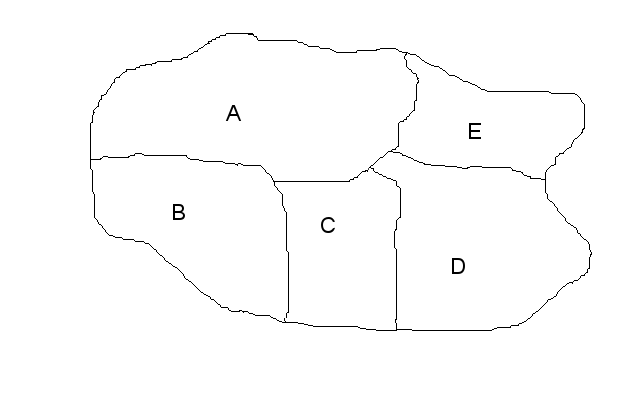Lisa是一门与众不同的语言,几乎没有人愿意用她来开发软件,速度还贼慢,她融合了很多试验性的功能,其中有一个功能就是逻辑编程。和Prolog类似,可以解决三段论的问题。给出事实和规则,Lisa/Logical可以自动分析其中的逻辑关系,允许用户通过查询,完成复杂的逻辑运算。
本文将会分析两个例子,给出用lisa解决两个实例的方案。实例来自于xmonader的prolog教程。 基本介绍可以看这篇文章。
基本使用
进入Lisa的repl之后,你就可以开始交互式输入代码并执行了。 界面类似于:
.____ .__
| | |__| ___________
| | | |/ ___/\__ \
| |___| |\___ \ / __ \_
|_______ \__/____ >(____ /
\/ \/ \/
Welcome to Lisa REPL by Somainer (moe.roselia.lisa).
Type in expressions for evaluation. (quit) to quit.
lisa>
在lisa>之后就可以输入代码了,为了新建一个逻辑上下文,我们需要打入如下代码:
(import-env! logical)
(logical/new-context)
(fact ...)很麻烦,我们这里可以写一个宏,将宏里面的所有代码外面都套上(fact ),即x => (fact x)。
取名为facts,代表要输入多个例子。
(define-macro (facts (... fs))
(define fact-clauses (map fs (lambda (x) (list 'fact x))))
'(let () ~~fact-clauses))
我们以朋友关系为例子,来讲述基本用法。
(facts
(friend john julia)
(friend john jack)
(friend julia sam)
(friend julia molly)
(loves john julia)
(loves julia sam)
(loves sam julia))
我们知道,喜欢这个关系不是互相的,但是朋友关系是互相的。
因此,我们需要定义反向的关系。与prolog不同的是,rule和fact不能有相同名字,因此我们定义一个friend?规则,规定:
(define-rule (friend? x y)
(or (friend x y)
(friend y x)))
这里我们就已经可以开始询问Lisa了:
lisa>(is-true? (friend? :jack :john))
[0]: Boolean = true
lisa>(is-true? (friend? :john :molly))
[1]: Boolean = false
lisa>(query (friend? :john x))
[2]: List = ({'x :julia} {'x :jack})
(query ('relation :john :julia)) => ({'relation :friend} {'relation :loves})
和prolog不同的是,我们可以动态添加规则或者事实。
(define-rule (sad-story x)
(and (loves x y)
(not (loves y x))))
然后我们可以继续询问Lisa:
lisa>(is-true? (sad-story :john))
[3]: Boolean = true
lisa>(is-true? (sad-story :julia))
[4]: Boolean = false
保存当前上下文
我们可以将上下文保存到某一个变量上,以供下次使用。
(define context (current-context)) ; 保存当前上下文
(pop-context!) ; 退出当前上下文
(logical/push-context context) ; 恢复context中的上下文。
地图染色
地图染色就是在如图所示的地图上,所有的区块染上三种颜色,要求相邻的区块的颜色不能相同。

Lisa解就十分显而易见,首先定义三种颜色:
(fact (color red))
(fact (color green))
(fact (color blue))
(define-rule (colorify a b c d e)
(and
(color a)
(color b)
(color c)
(color d)
(color e)
(not (= a b))
(not (= a c))
(not (= a d))
(not (= a e))
(not (= b c))
(not (= c d))
(not (= d e))))
colorify是一个接受abcde五个变量的规则,该规则成立的条件是,该五个变量被分配到某种颜色上,且相邻的区块颜色不相同。
我们可以直接询问有多少解:
(query (colorify a b c d e))
我们应该能得到六组解。
谁是凶手
Boddy 先生死于谋杀,现有六个嫌疑犯,每个人在不同的房间,每间房间各有一件可能的凶器,但不知道嫌疑犯、房间、凶器的对应关系。请根据下面的条件和线索,找出谁是凶手。
已知条件:六个嫌疑犯是三男(George、John、Robert)三女(Barbara、Christine、Yolanda)。
(facts
(man george)
(man john)
(man robert)
(woman barbara)
(woman christine)
(woman yolanda))
男人,女人,都是人:
(define-rule (person x)
(or (man x)
(woman x)))
六个嫌疑犯分别待在六个房间:浴室(Bathroom)、饭厅(Dining Room)、厨房(Kitchen)、起居室(Living Room)、 储藏室(Pantry)、书房(Study)。每间房间都有一件可疑的物品,可以当作凶器:包(Bag)、火枪(Firearm)、煤气(Gas)、刀(Knife)、毒药(Poison)、绳索(Rope)。
(facts
(location bathroom)
(location dining)
(location kitchen)
(location livingroom)
(location pantry)
(location study)
(weapon bag)
(weapon firearm)
(weapon gas)
(weapon knife)
(weapon poison)
(weapon rope))
每个人都是不一样的:
(define-rule (unique-people a b c d e f)
(and
(person a)
(person b)
(not (= a b))
(person c)
(not (= b c))
(not (= a c))
(person d)
(not (= a d))
(not (= b d))
(not (= c d))
(person e)
(not (= a e))
(not (= b e))
(not (= c e))
(not (= d e))
(person f)
(not (= a f))
(not (= b f))
(not (= c f))
(not (= d f))
(not (= e f))))
线索一:厨房里面是一个男人,那里的凶器不是绳索、刀子、包和火枪。
(and
(man kitchen)
(not (= kitchen rope))
(not (= kitchen knife))
(not (= kitchen bag))
(not (= kitchen firearm)))
(and
(man kitchen)
(or
(= kitchen :gas)
(= kitchen :poison)))
线索二:Barbara 和 Yolanda 在浴室或书房。
我们可以认为,浴室和书房都是女性,而且这个女性不是Christine,Barbara在浴室或书房,Yolanda也在浴室或书房。
(and
(woman bathroom)
(woman study)
(not (= bathroom :christine))
(not (= study :christine))
(or (= :barbara bathroom) (= :barbara study))
(or (= :yolanda bathroom) (= :yolanda study)))
线索三:带包的那个人不是 Barbara 和 George,也不在浴室和饭厅。
灵魂直译即可。
(and
(not (= bag :barbara))
(not (= bag :george))
(not (= bag bathroom))
(not (= bag dining)))
线索四:书房里面是一个带绳子的女人。
灵魂直译
(and
(woman rope)
(= rope study))
线索五:起居室里面那件凶器,与 John 或 George 在一起。
(and (man livingroom)
(not (= livingroom :robert)))
线索六:刀子不在饭厅。
(not (= knife dining))
线索七:书房和食品储藏室里面的凶器,没跟 Yolanda 在一起。
(and
(not (= :yolanda pantry))
(not (= :yolanda study)))
线索八:George 所在的那间屋子有火枪。
(= firearm :george)
线索九:Boddy 先生死在食品储藏室里,那里的凶器是煤气。
(and
(= pantry gas)
(= x pantry)))
线索就是这些,我们可以开始写入口了, 我们只关心凶手是谁。我们假定凶手是X
(define-rule (murderer x)
(and
(unique-people bathroom dining kitchen livingroom pantry study)
(unique-people bag firearm gas knife poison rope)
...
))
Christine。
骗你的,这样写代码要跑好久。我们需要手动做一些优化,我们需要将最简单的情况拍到前面,比如线索八,能省去好多不必要的枚举。
最后进行简单的重新组织,一个可行的代码是:
(define-rule (murderer x)
(and
(= firearm :george) ; Clue 8
(unique-people bathroom dining kitchen livingroom pantry study)
(unique-people bag firearm gas knife poison rope)
(and
(woman rope)
(= rope study)) ; Clue 4
(not (= knife dining)) ; Clue 6
(and
(man kitchen)
(not (= kitchen rope))
(not (= kitchen knife))
(not (= kitchen bag))
(not (= kitchen firearm)))
(and
(woman bathroom)
(woman study)
(not (= bathroom :christine))
(not (= study :christine))
(or (= :barbara bathroom) (= :barbara study))
(or (= :yolanda bathroom) (= :yolanda study)))
(and
(not (= bag :barbara))
(not (= bag :george))
(not (= bag bathroom))
(not (= bag dining)))
(and (man livingroom)
(not (= livingroom :robert)))
(and
(not (= :yolanda pantry))
(not (= :yolanda study)))
(and
(= pantry gas)
(= x pantry))))
(query (murderer x))
[0]: List = ({'x :christine})
这次,是真的能较快得出结果了。其实也没啥改动,就是把一些简单的情况排在前面,像我们在人工推理的时候也会把能直接确定的放在最前面。
r{{ changeExtraDisplaySettings({blurMainImage: true}) }}
